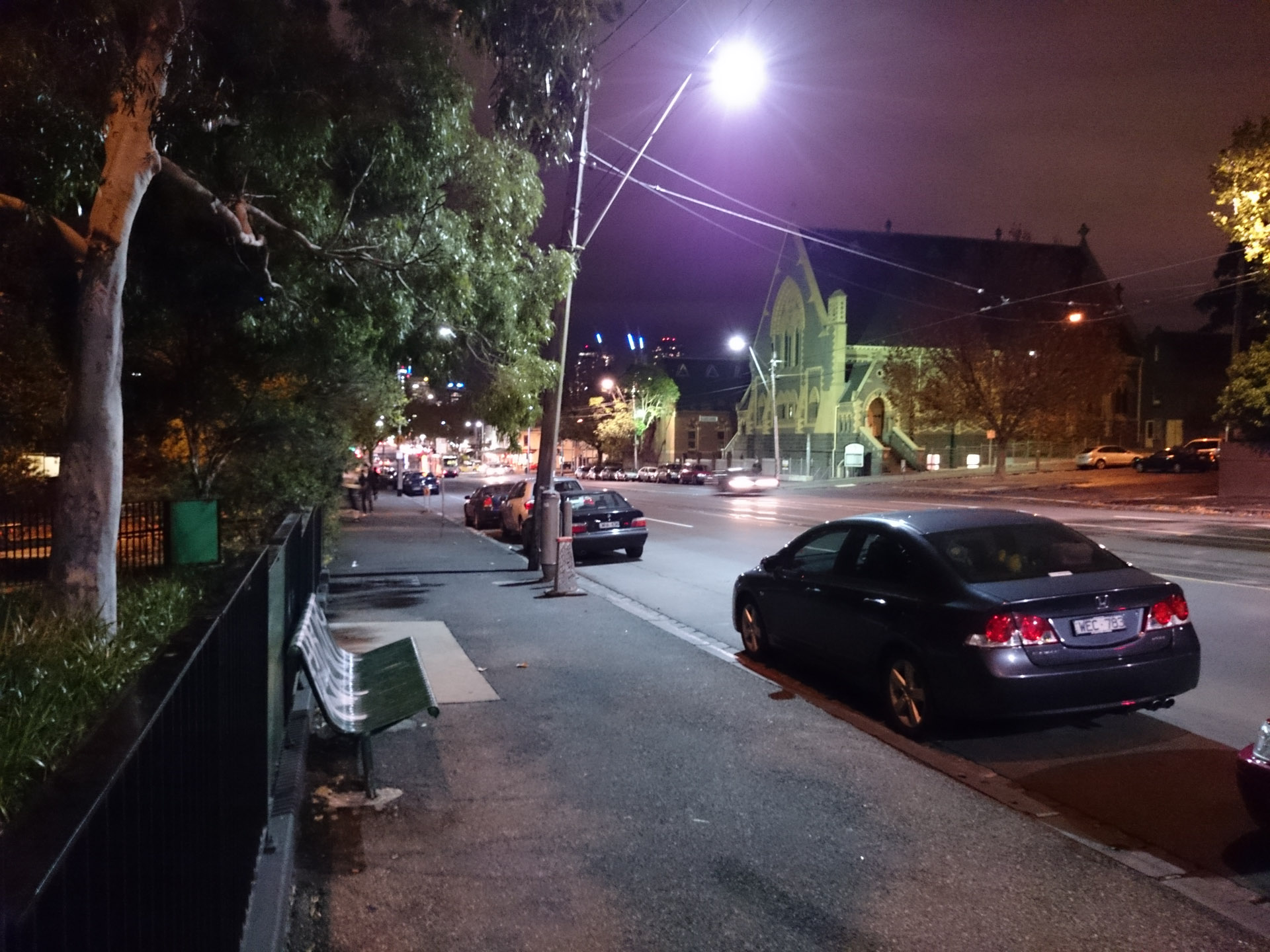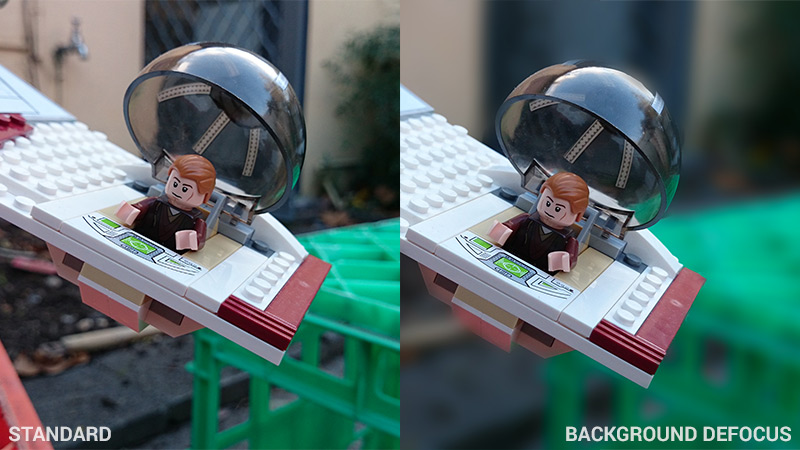Sony Xperia Z2 Review > Camera: The Same, But Better - petitdaughthe
Camera: The Same, But Better
The Xperia Z2's rear camera is identical to the Xperia Z1 from a hardware perspective, but that's not to say IT hasn't cleared. The sensing element is a 20.7-megapixel Sony Exmor RS 1/2.3" CMOS with 1.12 µm pixels, paired with a 27mm (in 35mm-effecive numbers) f/2.0 lens. On paper, the Xperia Z2 camera isn't pose up for low-candescent photography, as it lacks large pixels and optical image stabilization (OIS), but results in these conditions may surprise you.
On the front of the Z2, Sony has integrated a 2.2-megapixel camera capable of 1080p video recording. In the meantime, the bottom camera packs 4K Ultra HD video recording, thanks to what Sony claims is increased tv camera IP block bandwidth provided away the Snapdragon 801. I'm sceptical of this claim, Eastern Samoa the Snapdragon 800 found in the Xperia Z1 has been used in a 4K recording smartphone before (the Galaxy Note 3), just I'll acquire the high-resolution recording careless.


In many respects, the Xperia Z2's camera is top of the smartphone sort. Not only does it contribute large resolution images (5248 x 3936) to the table, which result in a beautiful level of lucidity and detail when you ordered series downcast the images it takes, but IT also produces remarkably accurate photos.
I say surgical because, generally speech production, what you see with your eyes is what the camera captures, no matter what the conditions are. If it's a silvery sunny day, the Xperia Z2 will seize silvern, vibrant images that are substantially balanced; if IT's cloudy, the Z2 captures this finished duller yet distillery accurate photos with an appropriate level of saturation.



Through striving for accuracy, sometimes the Xperia Z2 won't deliver photos with 'wow-factor' like you'd get with the Samsung Galaxy S5 operating theater Apple iPhone 5s. There's no overblown contrast Beaver State intensity, so not every image you take apart will attend stunning: as an alternative you'll view the photos you've taken and remark at how the tantrum really did look like-minded that at the time.
Sony's accuracy-focused tweaks to the Z2 camera's metering and processing have made information technology one of the best at tackling indoor picture taking. Historically a weak point for smartphone cameras, the Z2 is astonishingly good at taking photos when there's a moderationist amount of light available. Again, nothing is oversaturated, and it does struggle when there's strong backlighting operating theatre lots of counterpoint, but you can get a good photo kayoed of the Z2 here when you power not think it's possible.
Accuracy is every well and good – typically something I prefer – but there's no doubting that, in around situations, photos taken by the Xperia Z2's camera are a trifle lacklustre in comparison to another flagships. This International Relations and Security Network't an issue with the sensor or general hardware setup, which are rattling good, so I feel that a couple of software situatio-processing tweaks could really make the Z2 camera shine.

Clink to see 100% crops of the above images
Viewing 100% crops of full-resolution images reveals a decent amount of zooming and cropping legroom. Particular at this level is good, although in that location are notable artefacts as a result of C. W. Post processing, as well as visible grain. Downscaling to 1080p looks ace as these blemishes disappear, although you could easily get away with a 2x or 3x crop without running into quality issues.
Underslung-floodlighted execution from the Xperia Z2 is easily the top-grade I've seen from a photographic camera inadequate OIS and with miniature pixels in its sensor. The software stabilizer does a good, but non perfect job of removing blur from photos expropriated at night, patc mail-processing manages to reduce food grain piece conserving inside information. Images seminal fluid out sounding sharp and careful, which makes you question how more better they could be if the Z2's camera module packed OIS.




You're not departure to get low-light results that are every bit good as the HTC One M8 or Nokia Lumia handsets, but the Z2 captures a surprising amount of light for its hardware, qualification images look bright and accurate. There's an LED flash on the back of the handset, but I lean to avoid using it because it washes out images and ISN't all that powerful.
Like with the Xperia Z1, there's still several issues with the Xperia Z2's camera software. Sony has continued to use of goods and services cardinal principal shot modes: Superior Machine, and Manual. The former is a elemental camera mode that does a great job at selecting nearly every mise en scene for you, only only captures images at a supersampled 8-megapixels. Manual, then again, naturally gives you more than control and allows you to seize full-solvent (20.7 MP) images, but comes with some restrictions.



Past default the camera uses Superior Auto mode, and most people wish be fine with its capturing of 8-megapixel 16:9 images that are essentially downscaled (aka. supersampled) from 20 megapixel shots. They look very good and maintain disk space through with a lower resolution. All the same if you are after full resolution images, which I'm sure many masses are considering this phone has a large detector, be on your guard of several restrictions.
Firstly, you sack't capture 20-megapixel HDR images with the Xperia Z2, which I find interesting considering it's non that much large than the Galaxy S5's 16-megapixels, with that camera supporting full-resolution HDR. The Z2's HDR mood isn't as good every bit I've seen on other devices; nevertheless it's disappointing that information technology's fastened out at full resolution.

There's likewise a restricted ISO range, top-flight forbidden at 1250 (or 800 if you manually superior it), and a lack of any scene options. The good news is that the improved television camera software program and microcode actually makes shooting low-light images at ISO 800 viable, particularly when the software image stabiliser is enabled. The repentant news is that 8-megapixel images can be shot at up to ISO 6400 with great results – likely due to pel supersampling – which makes Superior Auto photos look brighter and clearer in the darkest of conditions.
I'd love to see a Superior Auto manner that captures full resolution images without restrictions on HDR and ISO in a time to come Xperia smartphone. For now, Sony is sticking with producing optimized 8-megapixel images from a 20.7-megapixel sensing element, and I don't think that's the rightfield choice.



Aside from Superior Auto and Manual modes, Sony has packed in a number of another shot modes that are essentially applications, similar to what Microsoft has done with Lenses in Windows Headphone. Just about of the primary ones include Original Effect, which applies live filters to images; Timeshift Burst, which captures salvo shot images and allows you to blue-ribbon the best one and only, atomic number 3 well as apply a few personal effects; and Arkansas Effectuate is an amusive but ultimately stupid 3D increased realness mode.
Backdrop Defocus is Sony's software attempt at producing results wish HTC has achieved with their Duo Television camera on the One M8. Similar to the Galaxy S5's implementation, Background Defocus takes a flare-up shot at multiple focus points, and uses software edge in detection to discover the subject and defocus the background. After the image has been arrogated, you can adjust the simulated bokeh using a slider, although it's not possible to select multiple focus points.


The Z2's effectuation is to a greater extent effective than the Galaxy S5's at producing a nice defocusing effect, although it's nonetheless bound by limitations relating to the lack of a depth sensor. If the subject is too surrounding, Background Defocus doesn't function at all, and if on that point's too much going on in the scene, it'll struggle to correctly find the edges. The have is cool to play around with from time to time, but can't oppose the Ace M8 on final results.
Moving on to the Xperia Z2's video recording modes, and this is the first flagship from Sony that bum shoot 4K Immoderate HD (3840 x 2160) video through a dedicated video mode. I'm not sure why they didn't integrate Ultra HD transcription into Manual mode, which can record 1080p picture at some 30 and 60 frames per second, although it could be to highlight the lineament.
Ultra HD videos are recorded victimization High visibility H.264 with a bitrate of 55 Mbps, signification one small of footage requires roughly 400 MB of storage space. As you'd expect from so much large frame sizes, 4K video looks rattling, just American Samoa good every bit you'd get from pickings 8-megapixel stills. Audio select is also crisp and clear-thinking, while metering and focus occur somewhat quickly.
1080p30 (and 1080p HDR) is recorded with a bitrate of 17.5 Mbps, which isn't the highest I've seen from a smartphone, although quality is still precise good. Sony has bumped upfield 1080p60 to 30 Mbps, which is the best mode to use if you want smooth motion, although it does use more storage space. HDR video is favorable, as the Z2 makes use of the Snapdragon 801's real-time HDR feature, although it can't match the Galaxy S5 in bringing knocked out the item from shadows.
If you want to chip out the 1080p60 video recording quality from the Xperia Z2, you can download a taste here. Above is squatty a HDR video sample.
A separate shooting mode, called Timeshift Video, records 720p footage at 120 frames per second using High profile H.264 at 50 Mbps. This implementation of high frame rate video recording is interesting in that IT foremost saves an original file with playback set to 120 frames per second, and then information technology allows you to select which parts of the television you want to slacken using a slider. Afterwards you've made your selection, it renders the video and sets playback to 30 frames per second.
I like this way of recording high frame rate footage because it allows you to create fantastic videos with a combination of both loyal and slow motion. The Snapdragon 801 is more than almighty enough for rendition 720p footage on the fly too, sol thither's no deman to wait for a long time as the final picture is clarified.
Source: https://www.techspot.com/review/830-sony-xperia-z2/page5.html
Posted by: petitdaughthe.blogspot.com


0 Response to "Sony Xperia Z2 Review > Camera: The Same, But Better - petitdaughthe"
Post a Comment